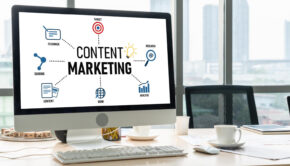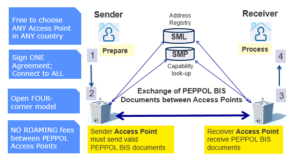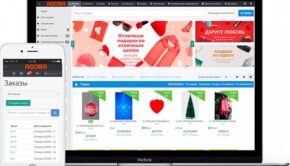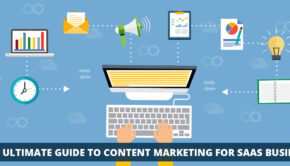How to Engage B2B Tech Buyers with Outbound Content Marketing
Overview
The business world is ruled by content. Everywhere you look, content is being used by successful companies on social media, on their websites and even in search engine ads. Podcasts, blogs, articles, surveys, whitepapers, reviews, case studies and infographics have all become commonplace in the stew of media that decision-makers consume on their buying journey.
Content marketing, a rare phenomenon ten years ago, has taken the centre stage in the business model of many companies. But what of conventional marketing strategies such as inbound and outbound marketing, is it time to abandon them completely?
Research disagrees.
Instead, companies must modernize their traditional outbound marketing strategies by including content in them. For technology companies, innovation has always been essential to success, but never has it been so badly needed in the field of tech marketing.

What is content marketing?
Let’s start at the beginning; content marketing is an approach to marketing that focuses on attracting the attention of prospects through content that is deemed to be helpful, informative or valuable. It helps target prospects (tech buyers in this case) during the first two stages of the buying cycle: the awareness and comparison stages.
During the awareness stage, the buyers are aware of their needs but need to be provided, or more specifically lured to, the right solution. Most content at this stage is promoted using social media channels such as LinkedIn and Facebook, and comes in the form of blogs, articles, videos, podcasts and infographics.
During the comparison stage, B2B content marketing focuses on proving to the prospective buyer that their company’s product is the right choice for them.. This is done through content such as case studies, company rankings, product reviews, tutorials and specifications, etc.
Why is it effective?
In an age where digital media is dominant, content marketing fills an important niche, catering directly to a large demographic of business professionals. Over 67% of the buyer’s journey is now digital, meaning tech companies that don’t invest in content marketing are missing out on a large segment of their target market.
In a study conducted by the Content Marketing Institute (CMI), 87% of companies declared that B2B content marketing helped successfully increase brand awareness. In addition, the CMI report found that 73% of the top successful content marketers said they used strategies to nurture loyal subscribers, audiences and leads on social media, 60% of which nourished a subscriber base.
Thus, it can be said that the most effective B2B content strategy doesn’t just stop at increasing brand recognition and boosting traffic to the first two steps of the buying cycle, it goes beyond that to generate leads. Further proving its effectiveness, content marketing is set to become a $400 billion industry by 2021. (Focusvision)
Conversion and Loyalty
The most important objectives content marketing seeks to achieve are brand trust and loyalty. Prospects must feel satisfied with the company’s superficial content in order to advance to later stages of the buying process: the conversion and loyalty stages.
During the conversion phase, prospects choose which product to purchase, using metrics such as return on investment (ROI). During this phase, content serves as an important factor in influencing prospects’ decisions, albeit in a more subtle way. B2B content such as product reviews, case studies and competitor comparisons all influence the prospect in their end decision, and convert them into leads.
About 75% of all B2B marketers in 2021 stated that content marketing helped them generate leads, and a further 45% said that it helped them support the launch of a new product (CMI).
Finally, content marketing also helps increase the amount of leads that become repeat clients at their respective firms. At this stage of the buying cycle, B2B content such as surveys, gratitude emails, promotions and product updates help to maintain brand loyalty from bona fide flipped leads.
What’s the deal with Outbound Lead Generation?
There seems to be a stigma surrounding outbound marketing; many people immediately associate it with email spam, outsourced telemarketers and even YouTube advertisements.
In reality, outbound lead generation is the process of contacting prospective customers who fit your ideal client profile (ICP). This is usually done by sales representatives using cold emailing, cold calling, LinkedIn follow-ups and so on. This is done instead of targeting a wide range of people in hopes of prospects coming to your company, known as the ‘spray-and-pray’ method.
This way outbound marketing targets customers with a preconceived need for your product, which increases the likelihood of generating leads and improves your conversion rate.
Outbound sales is only concerned with the latter stages of the buying cycle, namely the lead conversion process. It helps to increase the amount of leads in your sales funnel, and flip leads towards the end of the nearly 2-6 week buying process. (Focusvision)
The Importance of Data
One of the most important factors of a successful outbound strategy is an accurate, up-to-date database. Without data, you won’t be able to locate prospects who properly match your ICP, meaning your email bounce rate will increase, while your response rate and conversion rate will suffer.
Without good data you won’t be able to implement a key strategy in outbound marketing: Account Based Marketing (ABM). ABM focuses on making contact with top-level decision makers in companies with the right ICP, and it leads to a higher ROI.
Over 85% of marketers who use account based marketing admit to having a higher ROI than other outbound tactics. (ITSMA)
Incorporating content marketing in outbound sales?
Traditionally, content is only included in inbound marketing, however the best B2B content marketing strategies always use outbound sales as well.
This combination touches all four stages of the buying process, creating a complete marketing strategy. The main problem with many outbound lead generation techniques is that they don’t offer anything first, they always make promises to their prospects instead.
By including outbound content in your cold emails, you are giving before you receive. This creates the impression that you truly wish to help your potential clients with their business. By investing in data, you know exactly which decision-makers have the proper ICP for the technology you are offering. Therefore, you can use content in your ABM strategies, yielding an even higher conversion rate. In the words of New York Times best-selling author Tucker Max,
“People will go much further to avoid pain than to acquire pleasure. If you’ve done your research and found a major pain point for the recipient, and you can offer relief, highlight that.” (Harvard Business Review)
Outbound content marketing seeks to alleviate the pains of prospects by offering them free advice through the media people love to consume like videos, blogs, podcasts and articles.
The only difference is, instead of waiting for the right people to find the content by themselves, B2B content marketers send this content directly to people with a true need for it.
Takeaways
If it ain’t broke, don’t fix it. There is no need to completely abandon outbound lead generation in order to have a modern, effective marketing strategy.
Instead, it’s best to combine the old with the new, incorporating content into your outbound sales. This way, each stage of the buyer’s cycle can be targeted, from brand awareness to brand loyalty.
By combining two effective strategies, you are increasing the likelihood of having a higher conversion rate and subsequently a higher ROI. Outbound content marketing also takes advantage of tech buyer’s psychology, offering them exactly what they need, and then presenting a solution provided by your company’s products.
















